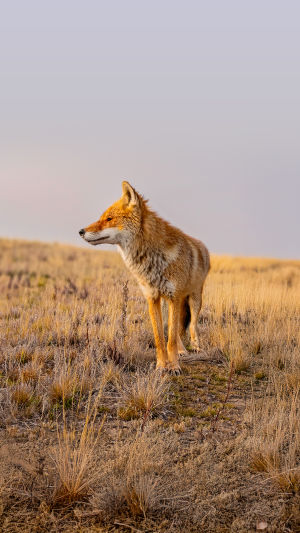Hey Lykkers! Ever heard of the red wolf? No, not a made-up creature from a fantasy novel— it's real, it's rare, and it once ruled the American Southeast.
With its rusty-red fur, long legs, and amber eyes, the red wolf looks like a mix between a gray wolf and a coyote—but it's its own unique species.
Sadly, there are fewer than 20 red wolves left in the wild today. Yep, just 20. Let's dive into how that happened, and why we shouldn't give up on them yet.
<h3>So, Why Are They Endangered?</h3>
<h3>1. Loss of Habitat</h3>
Red wolves used to roam through forests, swamps, and coastal plains across the southeastern U.S. But as humans built roads, cities, and farms, the wolves lost huge chunks of their territory. With nowhere to go, their numbers began to shrink fast.
<h3>2. Hybridization with Coyotes</h3>
Here's something wild: when red wolves couldn't find other red wolves to mate with, they started pairing up with coyotes. That led to a blending of species, and made it harder to keep the red wolf population genetically pure.
<h3>3. Hunting and Fear</h3>
Back in the day, red wolves were hunted because people thought they were dangerous to livestock—or confused them with coyotes. Even though they rarely pose a threat to humans or farms, they've been misunderstood and feared for centuries.
<h3>Fun Facts You Didn't Know About Red Wolves</h3>
<b>- They're smaller than gray wolves</b>, but bigger than coyotes. Think of them as the “middle child” of the wolf world.
<b>- They howl differently</b> —their howls are higher-pitched and softer than the deep, booming calls of gray wolves. Some people describe it as eerie and almost musical.
<b>- Red wolves are monogamous</b>, meaning they mate for life and raise their pups together—total power couple energy!
<b>- They play a vital role in the ecosystem</b>, keeping prey animals like raccoons and rodents in check, which helps balance nature in their habitat.
<h3>The Comeback Effort (That Needs a Boost)</h3>
In the 1980s, red wolves were officially declared extinct in the wild, but a small number were bred in captivity and later reintroduced into North Carolina. For a while, things looked hopeful. The population climbed to about 130 by the early 2000s. But due to relaxed protection laws, human interference, and poor management, those numbers crashed again.
Now, conservationists are racing against time to protect and rebuild this population. Every pup born in the wild is a big deal. It's a sign that with the right support, this species can survive.
<h3>Final Howl: Why Red Wolves Matter</h3>
Red wolves aren't just beautiful—they're symbols of survival, adaptability, and wild freedom. They remind us of what's at stake when we let a species fade away. Protecting them isn't just about saving a rare animal—it's about restoring balance to the land and honoring a piece of American natural heritage.
So next time someone says wolves are just big dogs, tell them about the red wolf—the ghost of the South, fighting for a future in the wild.
Want more wild animal stories, Lykkers? Just say the word—I've got tons of untamed tales to share!





